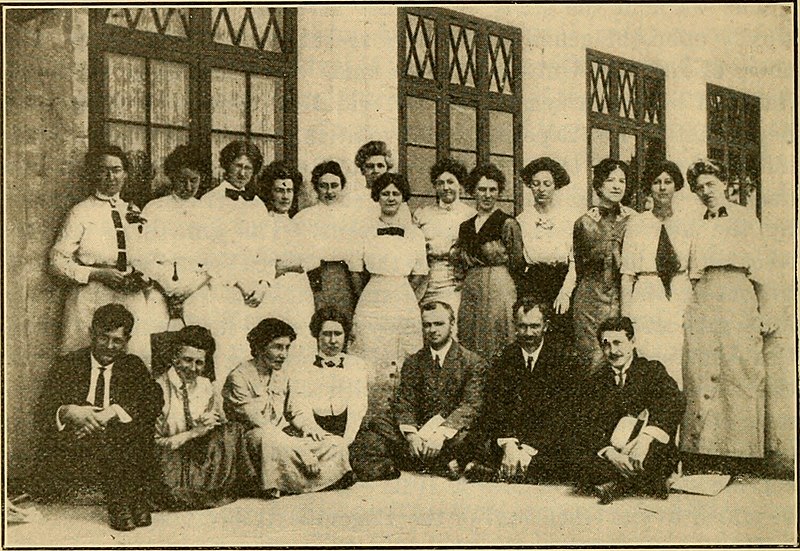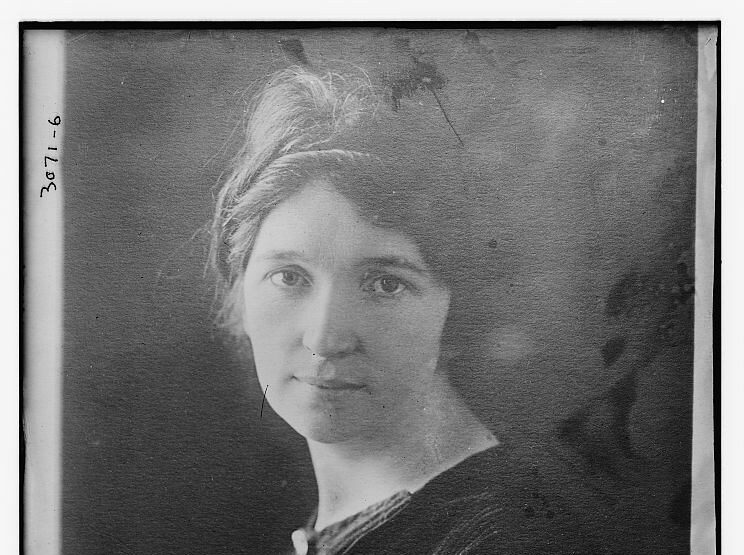By Susan Ciancio
The sum total of human freedom and human happiness will be greatly promoted, in the long run, by eugenical processes which call for the elimination of degenerate and handicapped strains, from the racial stocks, and the increase of numbers of citizens highly endowed by nature with splendid mental, physical, and moral qualities. The state, then, must exercise its undoubted right and duty to control human reproduction along the lines of race betterment.
~ Harry Laughlin, Eugenical Sterilization in the United States
It has been said that if we do not understand history, we are doomed to repeat it. Nowhere is this lesson more important than in how human beings treat each other. We can look at instances of war, of exploitation, of abuse, and at other forms of violence to see countless examples of the horrific things people have done to each other throughout history. And in these occurrences, we can see how people have felt “justified” in doing them.
Eugenics is one of those examples.
Harry Laughlin and the Eugenics Record Office
Harry Hamilton Laughlin was born in Iowa in 1880. He studied agriculture and became a teacher, then a principal and superintendent. His studies led to an interest in genetics and breeding, an interest that impelled him to contact a man named Charles Davenport. Davenport served as director of the Station for Experimental Evolution at Cold Spring Harbor, New York. Laughlin was impressed by Davenport’s work, as Davenport was “one of the first scientists to introduce the concepts of Mendelian genetics into the United States.” The two men began a correspondence that would eventually lead to Laughlin’s career in eugenics.
In 1910, after receiving a grant from a wealthy benefactor, Davenport created the Eugenics Record Office. According to the Eugenics Archive, “The ERO’s public presence was used to promote restrictions on immigration, segregation of the so-called unfit, and sexual sterilization legislation.”
The Eugenic Record Office’s 1912 Field Worker’s Conference
The Eugenics Record Office facilitated research on heredity and eugenics and served as a repository for genetic data that had been collected throughout the US. Investigators collected data via questionnaires or through field research. According to the Eugenics Archive, “During its years of activity, the ERO catalogued thousands of individuals and their different traits. The data collected were subjective, often inaccurate, and prejudiced.”
Davenport asked Laughlin to be the superintendent of the Eugenics Record Office. Laughlin agreed. Thus, in October 1910, Laughlin and his wife moved to Cold Spring Harbor, New York. Laughlin then served as the superintendent of ERO from 1910 to 1921. In 1921, he became the assistant director. He served in that capacity until 1939.
In his job with the Eugenics Record Office, “Laughlin collected details on every sterilization law in America, having surveyed more than 160 institutions in the United States and collected thousands of manuscript pages of text.”
According to a University of Missouri article that called Laughlin the “workhorse of the American eugenics movement,” Laughlin’s two primary interests in eugenics were “immigration restriction and compulsory sterilization of the ‘unfit.’”
In his position at the ERO, Laughlin would go on to write a model sterilization law that he hoped the states would use as they began to draft their own laws.
They did.
Laughlin Influences Eugenic Sterilization in the U.S.
In his years at the ERO, Laughlin penned many articles that advocated eugenic policies. These included segregation, sterilization, laws on who could get married, and restrictions on immigration—all of which targeted those whom he felt were “feeble-minded.” Like many eugenicists of his time, Laughlin believed that if the people whom he deemed “defective” could be eliminated, the world’s population could improve.
After years of collecting data and writing articles, Laughlin was ready to publish a book. In 1922, he published Eugenical Sterilization in the United States. This book outlines his Model Sterilization Law and his desire for states to implement his ideas. He claimed that, if the law were enacted, “the genes from ‘the most worthless one-tenth of our present population’ would be eliminated within two generations.”
In the book, Laughlin identifies those he believes to be “socially inadequate” and who should be marked for sterilization. Those people include “the feeble-minded, the insane, criminals, epileptics, alcoholics, the blind, the deaf, and the deformed.”

It was no secret what this book is about or what the author’s intentions were. Indeed, at the front of the book is a picture of a sculpture of a family. The caption reads “Keep the life stream pure.”
Laughlin’s book established him as a leading eugenics expert. Though he printed only a few thousand copies, he put them in the hands of high-ranking men in US government offices. He hoped that his book would resonate with these men and influence them to create laws based on his ideas. Laughlin’s aspirations came to fruition; many states began passing eugenic sterilization laws.
According to an HLI article on forced sterilization in the US:
By 1930, 30 states had passed laws that mandated eugenic sterilization for various moral or criminal offenses. Almost all of these states “imposed mandatory sterilization of mentally defective citizens. Nineteen states required sterilization for parents of children likely to experience various disorders. Six states encouraged sterilization for individuals whose children might be ‘socially inadequate.’”
But Laughlin’s influence was felt beyond the United States.
Laughlin and Nazi Germany
Laughlin did more than distribute his book to bureaucrats in the US. He also sent it to bureaucrats in Germany. His ideas resonated with German officials, and they began to model their eugenic sterilization laws after his.

According to a University of Michigan article: “The Third Reich’s 1933 ‘Law for the Prevention of Offspring with Hereditary Diseases’ was modeled on laws in Indiana and California. Under this law, the Nazis sterilized approximately 400,000 children and adults, mostly Jews and other ‘undesirables,’ labeled ‘defective.’”
Three years later, the University of Heidelberg in Germany awarded an honorary doctorate degree to Laughlin for his work in “race hygiene.” Laughlin also began working as a member of the editorial boards of a number of German journals that were devoted to “race hygiene.”
Related: The Racism of Eugenics
However, his aspirations didn’t stop there.
Laughlin’s Widespread Influence
Outside of his position at the Eugenics Record Office, Laughlin held various positions with other organizations, including:
- The American Eugenics Society (president, 1927-1928)
- The Eugenical News (associate editor, 1916-1939)
- The Third International Congress of Eugenics in New York (secretary, 1932)
- The US Committee on Immigration and Naturalization (eugenics expert, 1921-1931)
- The Municipal Court of Chicago (eugenics associate, 1921-1930)
- The Department of Labor (1923-1924)
- The Immigration Commission of the International Labor Office of the League of Nations (1925)
- The Galton Society
Laughlin’s studies on immigration supported his theory that there were more “socially inadequate” people from Southern and Eastern Europe. To the Department of Labor, Laughlin advised:
…that certain immigrants, notably those from eastern Europe had more issues of “undesirability” compared to those from more northern European countries (Gur-Arie, 2014). He carried out studies to this end, which helped create restrictive immigration in the United States during the 1920s (Gur-Arie, 2014). Laughlin was also consulted during the establishment of the Immigration Restriction League in California, which sought to limit immigration into the United State to literate persons.
Because of his writings regarding these immigration practices, the US government’s 1924 quota system favored immigrants from Northern Europe.
Founding the American Eugenics Society
In 1926, Laughlin and four other men founded the American Eugenics Society “to promote eugenics education programs for the US public.” This society “described eugenics as the study of improving the genetic composition of humans through controlled reproduction of different races and classes of people.”
Margaret Sanger, founder of the American Birth Control League—which later became Planned Parenthood—was once a member of the American Eugenics Society. Sanger had a long history of supporting eugenics and advocating birth control so that “undesirables” would not breed.

In “A Better Race through Birth Control” (1923), Sanger writes:
The object of civilization is to obtain the highest and most splendid culture of which humanity is capable. But such attainment is unthinkable if we continue to breed from the present race stock that yields us our largest amount of progeny. Some method must be devised to eliminate the degenerate and the defective; for these act constantly to impede progress and ever increasingly drag down the human race.
Sanger’s own words speak volumes to her belief in eugenics. In “Birth Control and Racial Betterment,” Sanger writes:
While I personally believe in the sterilization of the feeble-minded, the insane and syphilitic, I have not been able to discover that these measures are more than superficial deterrents when applied to the constantly growing stream of the unfit. They are excellent means of meeting a certain phase of the situation, but I believe in regard to these, as in regard to other eugenic means, that they do not go to the bottom of the matter. Neither the mating of healthy couples nor the sterilization of certain recognized types of the unfit touches the great problem of unlimited reproduction of those whose housing, clothing, and food are all inadequate to physical and mental health. These measures do not touch those great masses, who through economic pressure populate the slums and there produce in their helplessness other helpless, diseased and incompetent masses, who overwhelm all that eugenics can do among those whose economic condition is better.
Birth control, on the other hand, not only opens the way to the eugenist, but it preserves his work.
Sanger’s practices continue to live on today in the organization she founded—Planned Parenthood. However, after decades of attempting to teach the world the truth about the racist and eugenicist practices and beliefs of Margaret Sanger, pro-lifers have seen just a bit of hope. It seems that many are finally listening, even Planned Parenthood, who has begun removing her name and statues from a few of its facilities.
Related: Sanger’s Planned Parenthood, Birthed in Eugenic Racism
Final Thoughts
I leave you to ponder some of Laughlin’s words from Eugenical Sterilization in the United States:
Euthanasia is not resorted to in our most highly civilized states, but in some of the less advanced communities of the world, especially those in which the population crowds closely upon the food supply, it is common to remove, often by non-punitive death, the members least necessary to the life of the tribe. The direct means of controlling the racial quality of future generations available to our more enlightened and humane states are the legal control of immigration and of marriage; social punishment for illegitimacy; the regulation of attempts at birth-control, abortion, and infanticide; teaching the better classes the truth concerning human heredity and the necessity of fit and fertile matings among those with the best natural endowments; and finally the limitation of reproduction of degenerates by eugenical sterilization.
For many years, Laughlin’s ideas were not only held in high regard but were widely implemented throughout the US. Presidents Woodrow Wilson, Herbert Hoover, Calvin Coolidge, and Theodore Roosevelt were supporters, as were many faculty and presidents of leading universities.
Knowing this, we are reminded of Christ’s words to His Father while He hung on the cross: “Father, forgive them. They know not what they do.”
Over time, laws were challenged, and lawmakers began to see eugenics for what it truly is—a grave evil.
But though that battle has seemingly been won, we now find ourselves on a different battlefield—one fraught with abortion, contraception, euthanasia, and a disdain for anyone who is not deemed wanted or useful.
That’s why it’s vital that we look at these issues and expose the truth. It’s vital that we learn from historical figures such as Laughlin and Sanger. It’s vital that we have compassion instead of contempt for the people they hoped to eradicate. And it’s vital that we work to build a Culture of Life rather than succumb to the culture of death.
This article has been reprinted with permission and can be found at hli.org/resources/harry-laughlin.
